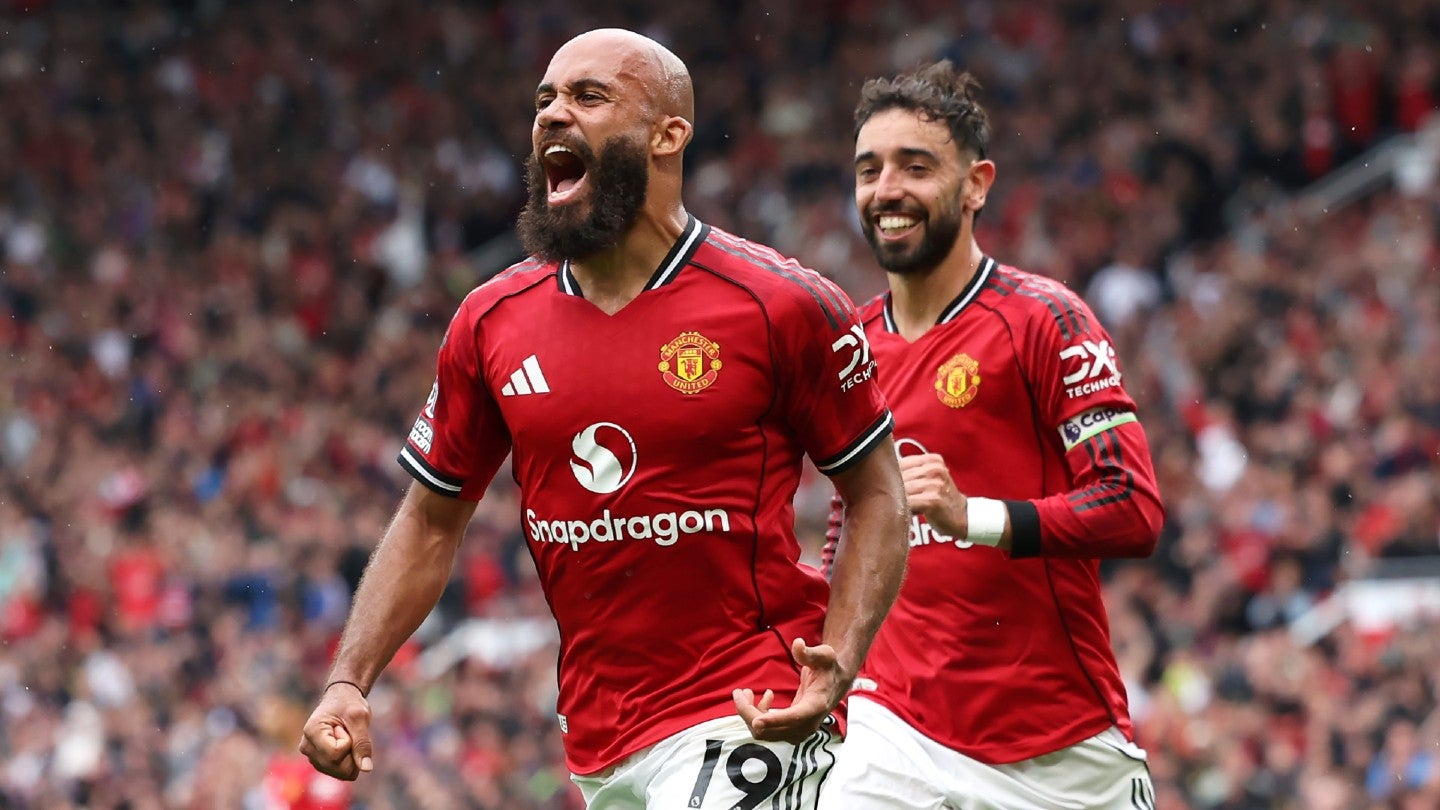
English soccer giants Manchester United have published their financial results for the 2025 financial year (July 2024 through June 2025), headlined by yet another year of record annual revenue and a major cutting of its annual losses.
The club posted revenue of £666.5 million ($908.8 million) across the period, a relatively minor uplift on the £661.8 million figure the club recorded in September 2024; however, crucially, the side also significantly reduced its operating loss over the period from £69.3 million in 2024 down to 18.4 million in 2025.

Discover B2B Marketing That Performs
Combine business intelligence and editorial excellence to reach engaged professionals across 36 leading media platforms.
This, in part, came from a strong uplift in commercial revenue, up 10% year-on-year (YoY), up to £333.3 million.
Of that figure, sponsorship revenue accounted for £188.4 million (up £10.6 million YoY), powered by the club’s new front-of-shirt sponsorship deal with tech heavyweight Qualcomm’s Snapdragon brand, a reported £60 million per year (the most lucrative in the English Premier League).
Retail and merchandising operations, the other element to the commercial revenue figure, grew 19.8 million YoY up to £144.9 million, after the first full year of the team’s e-commerce partnership with the Scayle platform, which has remodeled the club’s online sales operations.
The surge in matchday revenues across the period, up 16.9%, helped to offset the decline in broadcasting revenue over the period (down £48.9 million), which fell as the club went from the elite UEFA Champions League in 2023-24, to the secondary UEFA Europa League in 2024-25, despite reaching the final of the latter competition, outlining the gap in financial value between the two.

US Tariffs are shifting - will you react or anticipate?
Don’t let policy changes catch you off guard. Stay proactive with real-time data and expert analysis.
By GlobalDataAnother major contributor is the reduction of the club’s substantial losses from the year prior come from the reduction in operating costs across the year (down by £34.9 million), thanks to the reduction of employee benefit expenses (-£51.5 million) thanks to the club’s absence from the Champions league (and the associated player bonuses that come with it) as well as the reduction in staffing costs across the period.
Since taking charge of the club’s operations in 2024, Jim Ratcliffe and his company Ineos have embarked on a campaign of cost-cutting measures at United, including a redundancy program that cut hundreds of jobs.
While this drew the ire of the public, Ratcliffe deemed such measures necessary if the club is to continue to maintain a sustainable balance sheet going forward under the Premier League’s Profit and Sustainability Regulations (PSRs).
That Manchester United’s annual loss has been cut by such an amount speaks to the success of Ratcliffe’s measures in fiscal terms, despite the club’s continued on-pitch travails.
On the latest financial results, GlobalData Sport lead analyst Conrad Wiacek commented: “While Manchester United continue to suffer on the pitch, the new Ineos era seems to be providing tangible benefits off the pitch.
"The cost-cutting measures undertaken by Ineos and Jim Ratcliffe have reduced the losses suffered by the club, and their growing commercial revenues, underpinned by the new front-of-shirt deal with Snapdragon, show that the club still has a great deal of commercial appeal.
“Half of the record revenue announced comes from the commercial department, arguably the only part of the club that can be considered a success since the departure of Sir Alex Ferguson and David Gill. While United still posted a loss, any sort of uptick in on-field performance should see the club return to profitability, a stated aim for Ratcliffe as he eyes a new stadium development.”
Earlier in 2025, the club unveiled plans to construct a new, 100,000-seater stadium to replace the club’s iconic (yet ailing) Old Trafford ground in time for the 2030-31 campaign.
Reportedly set to cost upwards of £2 billion, the project (potentially a public-private partnership) will require significant financial clout that could restrict United’s coffers significantly, should the side not rein in operational expenses in the short term.
In its new forward-looking guidance, Manchester United have projected similar revenue of between £640 million and $660 million for the 2026 financial year, despite not qualifying for the European soccer this season, a revenue drop it expects to be offset by further gains in Premier League broadcast disbursements.
Meanwhile, Manchester United have extended their partnership with sports travel experience brand, SportsBreaks.
SportsBreaks has served as United’s official supporter travel partner for the past four seasons, enabling fans from across the UK and multiple other countries worldwide to watch matches at Old Trafford via its official ticket-and-hotel break packages.
As part of the extended partnership, SportsBreaks will continue to offer official match breaks to all of United’s home Premier League and cup fixtures. SportsBreaks’ packages include official MU membership, together with a selection of general admission tickets.





